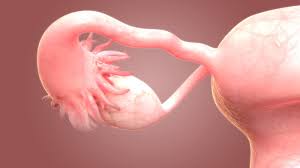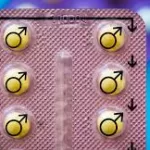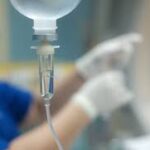April 8, 2024
University of Michigan engineers have unveiled a groundbreaking “atlas” of the human ovary, providing invaluable insights that could revolutionize fertility treatments and restore the ability to have biologically related children. This comprehensive understanding of the ovary could pave the way for the development of artificial ovaries in the lab, offering hope to individuals who have undergone toxic medical treatments like chemotherapy and radiation, which can compromise ovarian function.
The researchers behind this breakthrough study, published in Science Advances, utilized cutting-edge tools to delve into the intricate mechanisms governing ovarian follicle development. These follicles, which house immature egg precursors known as oocytes, are crucial for hormone production and fertility. However, current methods of implanting previously frozen ovarian tissue have limitations, as only a few follicles survive the reimplantation process.
Lead author Ariella Shikanov, Associate Professor of Biomedical Engineering at U-M, highlighted the significance of their findings. “Now that we know which genes are expressed in the oocytes, we can test whether affecting these genes could result in creating a functional follicle. This can be used to create an artificial ovary that could eventually be transplanted back into the body,” Shikanov explained.
The team’s research revealed key factors driving follicle maturation, shedding light on why many follicles fail to release hormones or eggs. By employing spatial transcriptomics technology, they meticulously tracked gene activity within ovarian tissue samples, pinpointing the molecular signatures associated with follicle development.
Jun Z. Li, Associate Chair of U-M’s Department of Computational Medicine and Bioinformatics, emphasized the ultimate goal of their work. “The magic we’re working toward is being able to trigger an immature cell into maturity, but without knowing which molecules drive that process, we’re blind,” Li stated.
The implications of this research extend beyond fertility restoration, as the engineered ovarian tissue could also prolong the fertility window and support hormonal regulation critical for overall health. Sue Hammoud, Associate Professor of Human Genetics and Urology at U-M, highlighted the broader impact of their work within the context of the Human Cell Atlas project.
“This new data allows us to start building our understanding of what makes a good egg — what determines which follicle is going to grow, ovulate, be fertilized and become a baby,” Hammoud explained.
The study, funded in part by the Chan Zuckerberg Initiative and the National Institutes of Health, marks a significant step forward in advancing reproductive medicine. As researchers continue to map various components of the female reproductive system, the promise of restoring fertility and improving reproductive health grows ever closer to reality.











